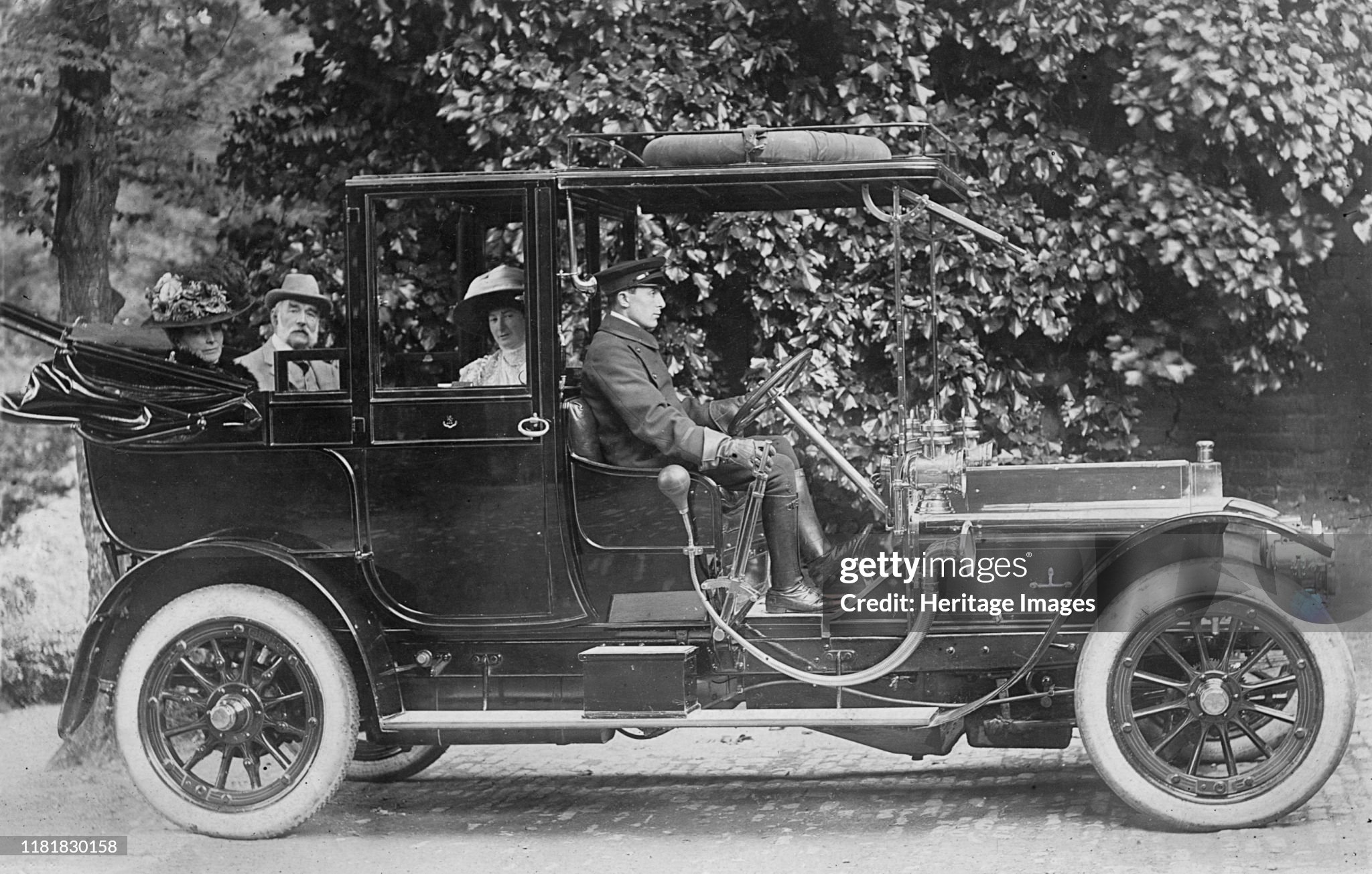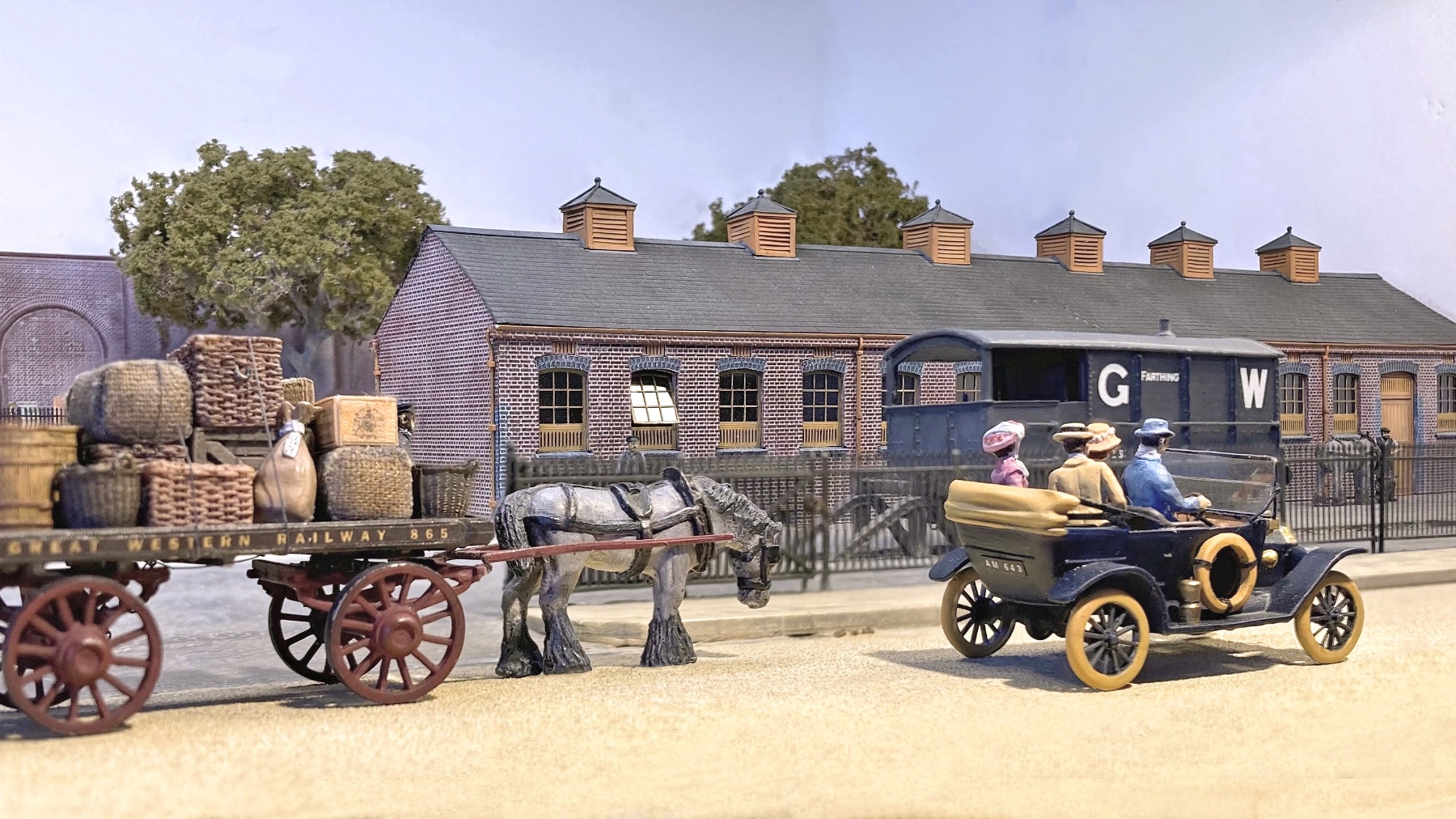
Here’s another pre-WW1 motor car in 1:76 scale for the Farthing layouts: A Late 1912 British Ford T Tourer, made from a modified DAPR 3D print.
Caption: 1906 Alldays and Onions. Source: Getty Images, embedding permitted.
During the 1900s the British motorcar industry grew quickly. Alledgedly some 200 firms tried their luck in the motorcar industry during this period, often evolving from other lines of production such as bicycle manufacture.
Caption: 1910 Wolseley Siddeley Landaulette. Source: Getty Images, embedding permitted.
Wolseley were among the dominant British companies at the time, and market leader for a while.
Caption: Interior of the Ford works, Trafford Park, Manchester, c1911-c1927. Source: Getty Images, embedding permitted.
Then Ford moved in. Early Fords were direct imports from the US, but in 1911 Ford set up their Manchester plant and the British Ford T was born.
Caption: A Factory 1912 Tourer. Source: The English Model Ford T Facebook Group.
Success came fast. By 1913 the Ford T was Britain’s best selling car.
Caption: American 1913 Ford T. Source: Model T Ford Fix.
British Ford T’s differed from American ones in variety of ways. Above, for example, is the American 1913 Model…
Caption: 1913 Factory Tourer. Source: The English Model Ford T Facebook Group.
…and above is the British 1913 Model. Noticeable differences include the cowl – that sloping bit in front of the firewall – and the shape of the wings, windscreen etc.
Caption: An English '12, '13, '14, and '15. Source: The English Model T Ford Facebook Group.
Like their American counterparts, the British Ford T designs changed continuously, sometimes within a single year. Above are - from left to right - preserved Ford Ts from 1912 (early version), 1913, 1914, and 1915.
I searched for a 1:76 scale Ford T and was pleased to discover a delightful series of 3D printed Fords from DAPR. They are not currently shown on their website, but an enquiry will hopefully give a positive result for anyone interested.
They even have gear rods and pedals. However, based on the steering wheel, cowl, grilles, door profile and wings it looks to me like an American-built model, ca. 1915. I needed a pre-WW1 British version, so decided to modify it.
I went for a British-built “Late 1912” model as seen above. There was also a British “Early 1912” model, which would have involved less conversion work (like the 3D print it had rounded doors and all wings curved), but I wanted to play around a little.
The grilles were filed off, as these weren’t present on the British 1912 models. The model is wet, it helps reduce dust in the air and lungs when filing.
The front wings were modified to be straight. Later the cowl was cut away by slicing off bits of material with a scalpel, then sanding it. Time consuming, but necessary for the backdate.
The curvy door profiles were sanded off and new square door profiles built with micro strip, as seen here. This photo also shows my first attempt at a replacement windscreen, a bit too coarse.
Here’s the final windscreen. It has a frame bent up from wire and is glazed with 5 thou perspex scored down the middle (they were foldable). Glazing stuck on with Vallejo satin varnish. Lamps from bits of plastikard.
A spare tyre was made from the rubbery grip around a pen.
The carbide generator (there were different types) was fashioned from two 4mm axle bearings, and a horn made from bits of styrene rod. Also a new steering wheel, using parts from 51L. On the Late 1912 model, the driver had no door on his side!
Finally a hand crank was made from bent wire, and “AM” registration plates as appropriate for Wiltshire 1903-1919.
It’s a myth that all Ford Ts were black. Prior to 1914, reds, blues and greens were in use. The British 1912 models were dark blue (thanks to Nick Holliday for supporting info on that).
A dive into the figure box produced a selection of Andrew Stadden’s offspring.
What people will do for their cars. A bit of modding to achieve appropriate posture.
Then painting. I prefer just 1-2 colours for the clothing, off-set by a single contrast colour (usually white).
As in coaches, I think it looks best if the passengers aren’t too neatly aligned.
Ready to ride.

So here we are in Farthing, it must be the summer of 1913.
The Percys and the Toynbees are out for a spin.
Going this way and that, making sure to be seen.
In the front seat is Alice, she’s enjoying the drive.
I like the wind and speed, she says, it makes me feel alive.
Lucky you! replies the brake van with a croaky sort of voice
That’s the real way to travel, off the rails and spoilt for choice!
Bah humbug, says the grumpy mare, it’s all to no avail
Cars will put us out of work, I feel it in my tail!
Indeed, agrees the wistful broom, I fear for our Yard
I sneezed and saw a future where all of this is tarred!
Goodness me, says the tree, with a trembling of the bark
They'll cut me up in pieces just to have a place to park!
Oh don’t worry says the engine, cars are tin cans nothing more
I am stronger, I am faster, I will win the transport war!
Are you sure? says the Ford, with a gearshift and a growl
Methinks it won’t be long before you’re throwing in the towel!
Alice felt a little dizzy. There it was again. That other world she had found. The magic world.
She rather liked it, but her husband did not. Don’t be daft, he always said. Do grow up.
Well, he was probably right. It was just her imagination.
A fantasy, that’s all. Nothing real, surely not.
***




.jpg)
































